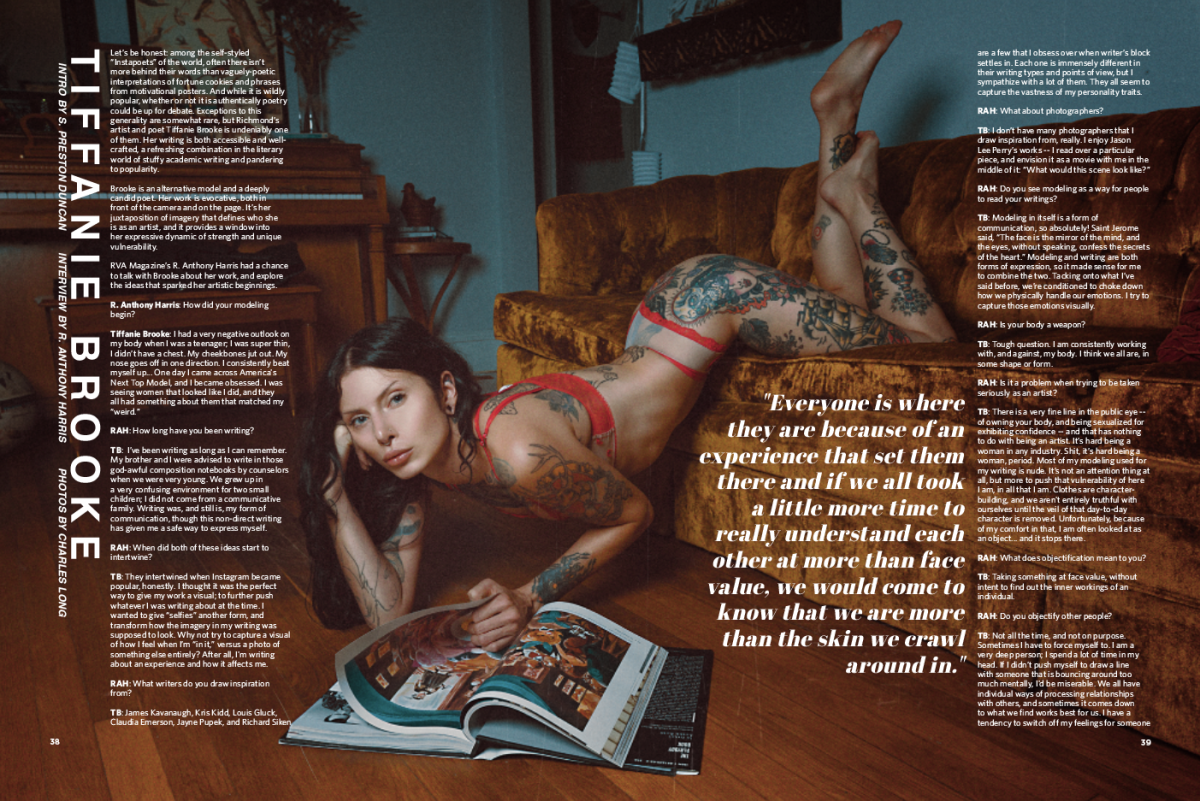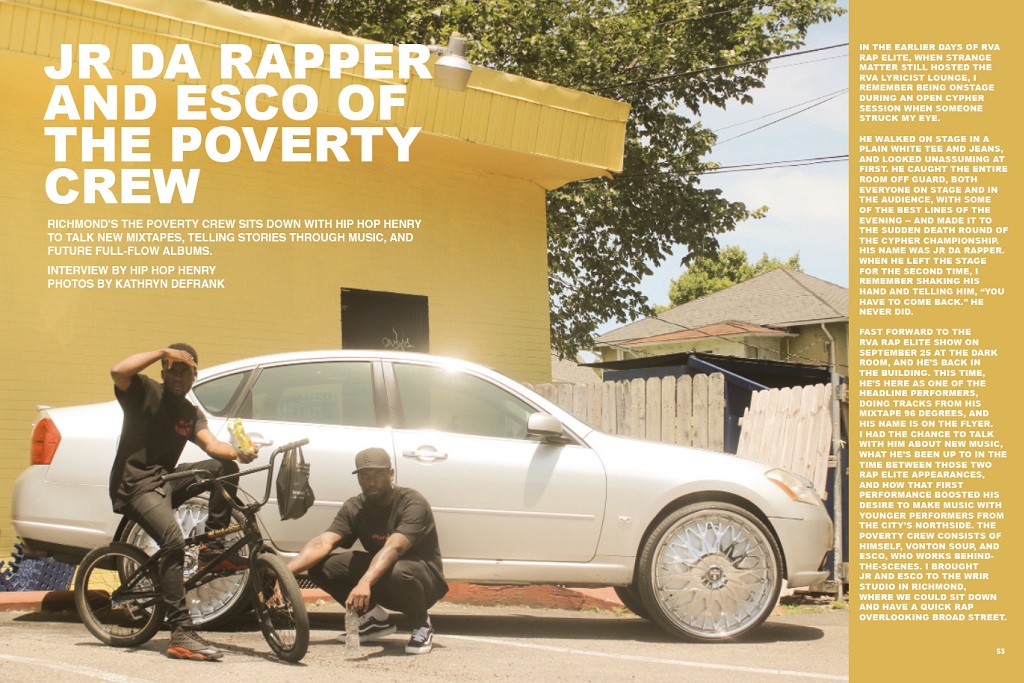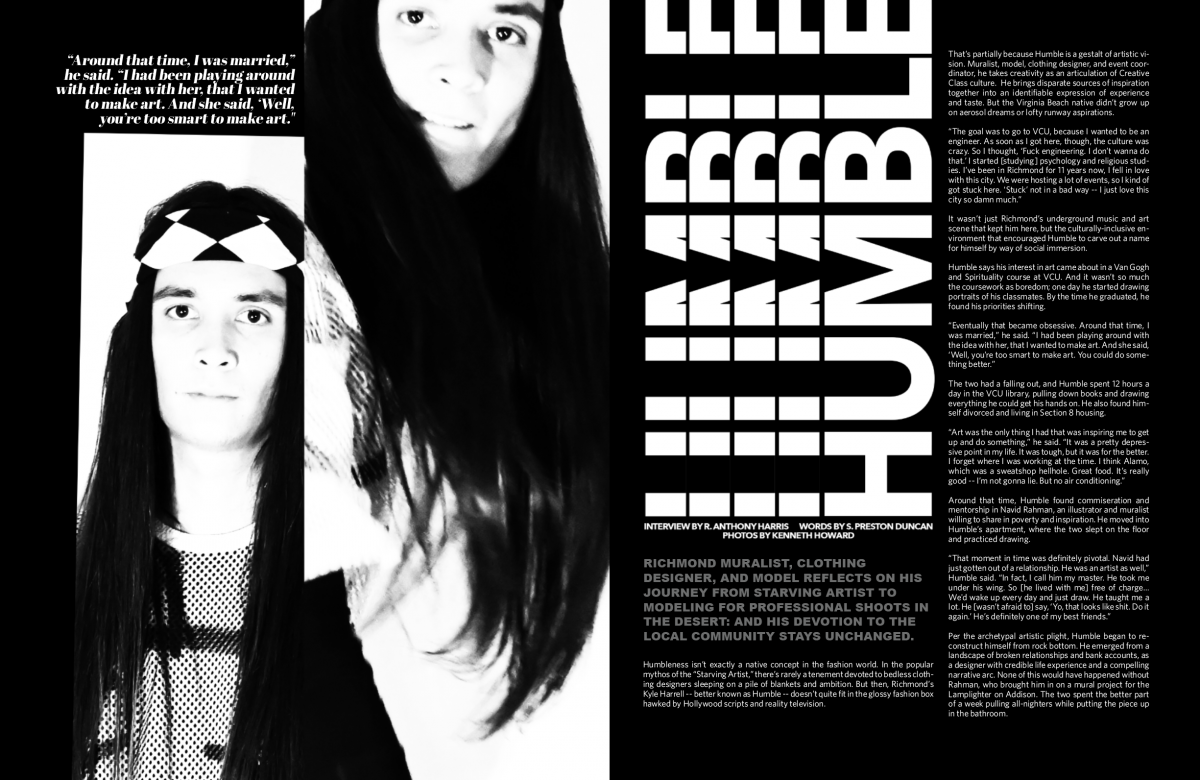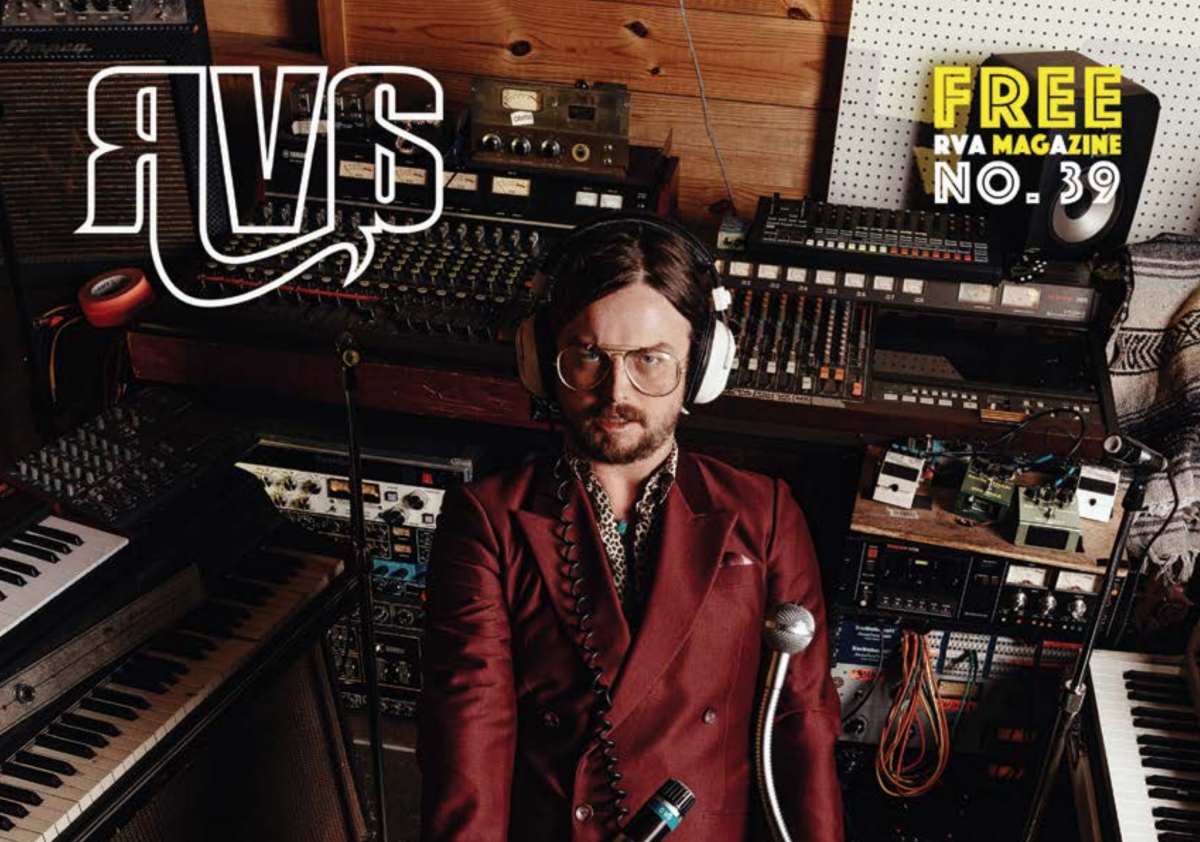RVA #39 is on the streets now! Here’s another article from the issue, in which artist and poet Tiffanie Brooke reflects on modeling, writing, and the power of the human body in self-expression. “We are more than the skin we crawl around in.” Let’s be honest: among...





